Since I first entered the cryptocurrency circle, my funds have jumped from 50,000 to 100,000, and then reached a peak of 302,000. In a short period of time, I witnessed a leap from 50,000 to 302,000.
By the third year, my assets had surged to 590,000 yuan, and by August of the fourth year, they had reached an astonishing 387,000 yuan. Just a few months later, in November, my wealth had jumped to over 7 million yuan. It seemed as if I could easily cash out 30 million yuan in the cryptocurrency market with just a touch of the pen.
Yet, behind this glorious backdrop, I also fell into the abyss. At one point, my assets peaked at approximately $4 million. I considered myself a major player in the cryptocurrency world. Impulsively, I quit my job and devoted myself to cryptocurrency trading, even taking out loans to invest. But reality dealt a heavy blow. The financial crisis hit, and not only did I lose all my previous profits, I was also burdened with heavy debt. I was ultimately forced to sell my house, and my wife and children nearly died.
Those days were the darkest time of my life. In just a few months, I fell from the top to the bottom of the valley. But it also made me realize that my previous success was not entirely due to my own strength. Luck also played a significant role.
I decided that if I wanted to continue my trading career, I had to focus on learning. I knew that in addition to a solid grasp of the fundamentals, a keen understanding of market information and a thorough study of technical indicators were equally crucial. Without thorough research and proper capital planning, I would ultimately deplete my hard-earned capital. As a retail investor with no background, I knew I couldn't just enter the market on impulse, or I would end up leaving in disgrace.
For the next three years, I cut off contact with all my classmates and friends, staying indoors, reviewing my trades day after day, taking naps on my keyboard when I felt tired. It was this unremitting effort that ultimately led me to financial freedom through cryptocurrency trading.
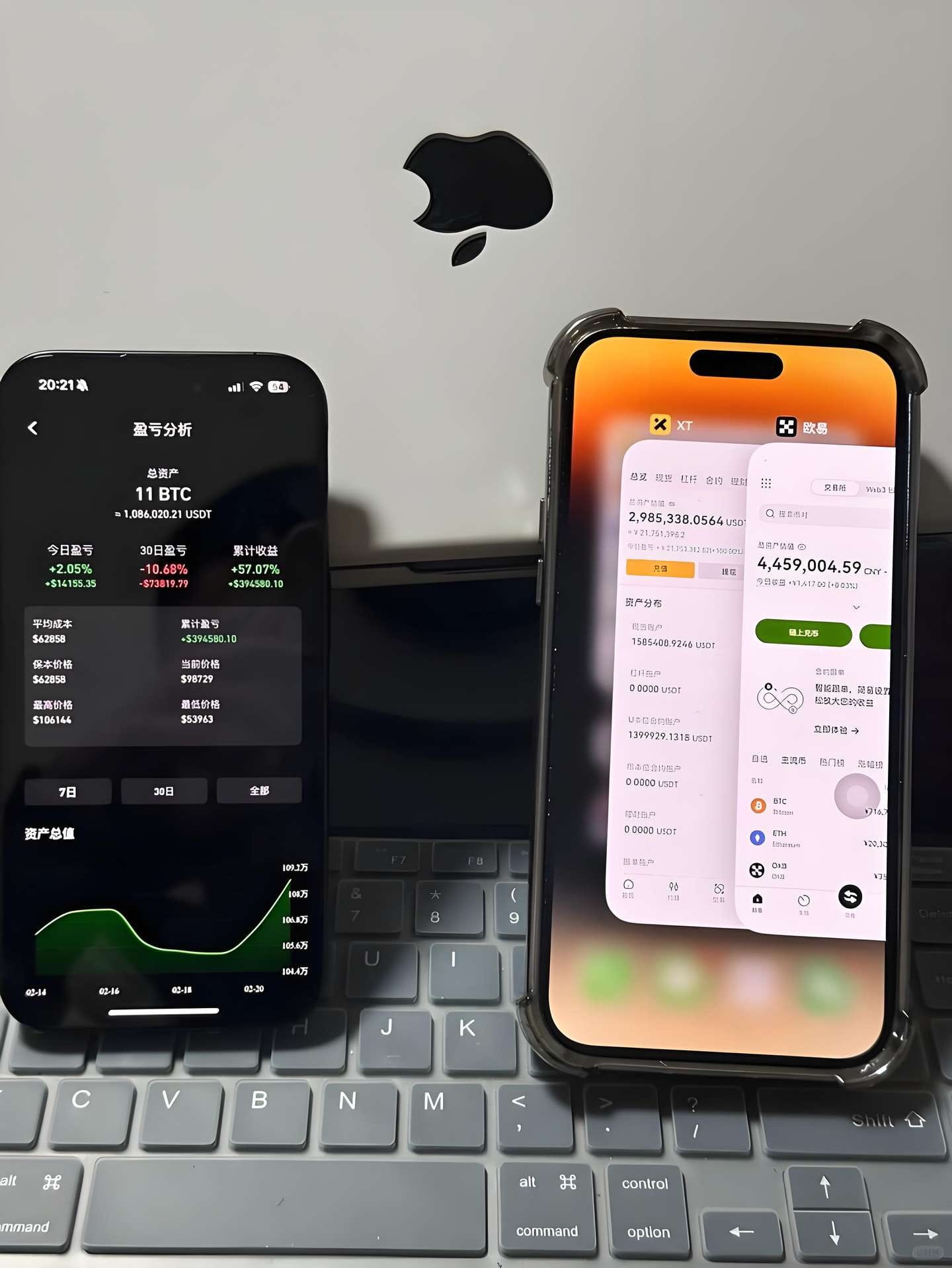
I later developed five "life-saving rules" that I review mentally before every trade. Now, even in the most turbulent market conditions, I can maintain a steady mindset. These aren't rocket science tricks, but practical methods that can help you minimize losses and maximize profits:
① If you make a mistake, cut it immediately, don’t play dead!
Now, I always set a stop-loss when I open a trade, usually at 3%. No matter how reluctant I am, I sell when the time comes. Remember: Don't try to "prove yourself right." The market never works for you. If you can preserve your capital, you'll have another chance next time. If you stubbornly hold on, you'll lose everything you could have to turn things around.
② Stop after five consecutive mistakes, don’t fight the market!
The market can be like a drunk at times, completely illogical. The more you fight it, the more your mind falters. I've set up a "circuit breaker" for myself: if I make five consecutive mistakes in a day, no matter how much I want to recoup my losses, I immediately shut down my trading software.
③ Earn 3000U and withdraw half immediately!
Don't be fooled by the numbers in your account; they're just a string of code; the market can wipe you out at any moment. When I first earned my first 3,000 U, I stared at the "3,300 U" in my account with such excitement that I almost wanted to add to my position. But then I thought: This money isn't mine until it's in my bank account. I withdrew 1,500 U that same day, and only when it was transferred to Alipay did I feel at ease. Every time I earned 3,000 U since then, I've withdrawn at least half—for example, last time my U went from 80,000 to 83,000, I immediately withdrew 1,500 U and continued trading with the rest. Secure your profits to earn them safely; don't constantly think, "Withdraw once you've earned more." Greed will only lead you to nothing.
④ Only trade in one-sided markets, and play dead when there are fluctuations!
100x leverage is a "booster" in a trend, but a "harvester" in a volatile market. I only open orders when the market has a clear direction.
⑤ Never hold a position larger than 10% of your principal!
Those who trade with a full position are gamblers. I've seen someone take 10,000 U and open a 100x contract, only to have the market reverse and get liquidated in just five minutes. Calling customer service was useless. Some people say, "Your position is too conservative, and your profits are slow." But I believe: Slow is better than losing everything. It's like eating ten dishes at a buffet. You might end up in the hospital; eating slowly allows you to taste everything without harming your body.
Keep your position light, and even if the market fluctuates, you will be able to deal with it calmly and will not lose your temper because of a single loss.
Now, I watch the market like I'm walking a cat: If it runs fast, I don't chase it; if it stops, I wait. I never make rash moves just because I'm desperate to make money. In the cryptocurrency world, getting rich quickly is a low-probability event; survival is a must. If you can't even protect your principal, how can you even talk about making big money?
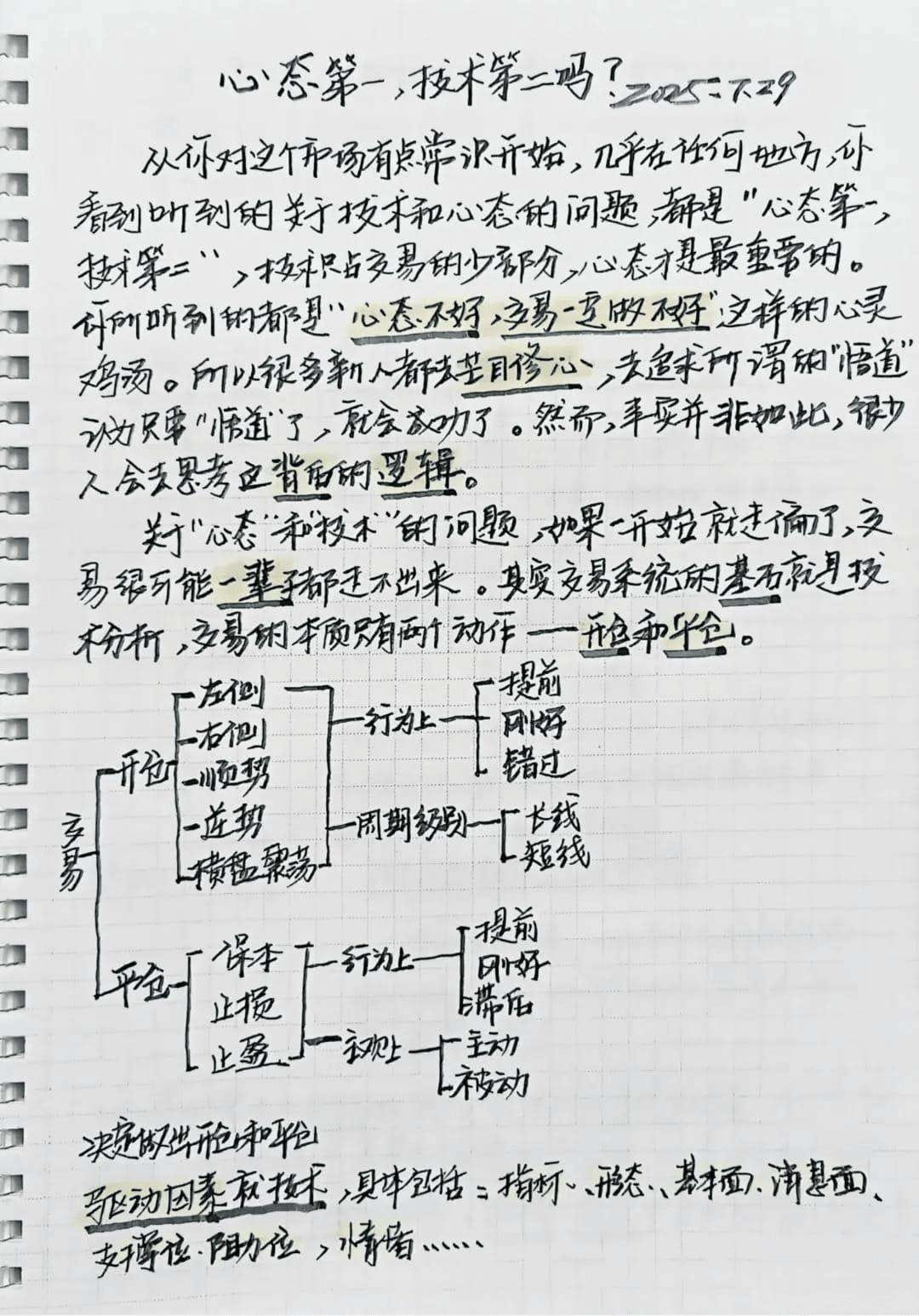
I used the dumbest method in the cryptocurrency world and made 10 times my money in 3 days. I’m not kidding you!
Don't criticize me, I really made a crazy profit by turning over the warehouse with the most "stupid" method.
In this cryptocurrency world full of technical and quantitative traders, my strategy is just like a primitive man - I only look at one indicator, only do one direction, and hold on to it. In fact, I am the last one to make money.
I have never studied finance, nor have I ever seen a lesson about K-line or anything like that. I am too lazy to even look at the Martingale hedging you mentioned.
My approach is really simple:
1. Follow the trend and buy strong spot coins. Wherever the main force goes, I will follow.
2. Break through yesterday's high point, go all-in, increase the position, and stop loss? Never heard of it.
3. If the price goes up, don’t hold on; if the price goes down, add to the position. I write my profit target directly on the calendar and sell it when the time comes.

You might think this is crazy? It's a joke. But I tell you, I used this operation to increase my account from 10,000 U to 100,000 U, $DOGE increased by 7 times, and $PEPE increased by 3 times! I didn't withdraw any money during the whole process, and I am still making money.
What did those who analyze fake breakthroughs and false signals every day do?
But my "silly method" actually made me have the last laugh!
Many people couldn't understand it and criticized me in the comment section: "Isn't this just gambling?"
Yes, I bet. I bet on the right direction, not on those unreliable air
My principles are simple:
Never short, only long
Don't touch those coins that have no progress, only follow the hot ones
Once you enter, stay put
No stop loss, rely on funds to control the retracement
Simple, right? And yet, I managed to double my holdings four times in one week, with several of my followers!
So, if you are willing to be obedient and willing to use the most "dumb" strategy, you can also make money!
Don’t be afraid of not having the skills. What you should be afraid of is that you are too smart and your mentality explodes!
Why do 90% of investors find it difficult to make a profit?
The core issue lies in frequently making irrational decisions at the wrong times! Whenever the market experiences a correction, a large number of investors rush to sell like frightened birds. When pressed on the reasons for the sell-off, the answers are often shocking: "Everyone is selling, and if I don't, I'll lose a lot!" This blind following of the crowd has long deviated from the essence of investment and is nothing more than a wealth-attrition war driven by collective irrationality.
Global economic fluctuations may seem complex and unpredictable, but they actually align with the underlying logic of capital operations. Whether it's geopolitical conflicts, cyclical economic crises, or sudden market panics, history repeats itself with a familiar pattern:
Trading cycle of large institutions
Step 1: Create panic – Institutional selling triggers severe market fluctuations
Step 2: Retail investors stop losses – investors sell their stocks at a low point due to fear.
Step 3: Low-level accumulation of funds - institutions calmly take over and complete the collection of chips at a low price

The cruel truth of the market is:
Professional investors often make decisive arrangements when the market plummets
Ordinary investors always chase rising prices and sell falling prices
This ultimately leads to wealth flowing from the hands of the majority to the hands of the minority.
The real investment wisdom should be:
Market crash is the touchstone for testing high-quality assets
Moments of collective panic often present excellent entry opportunities
Most profits tend to be concentrated in a few key holding stages
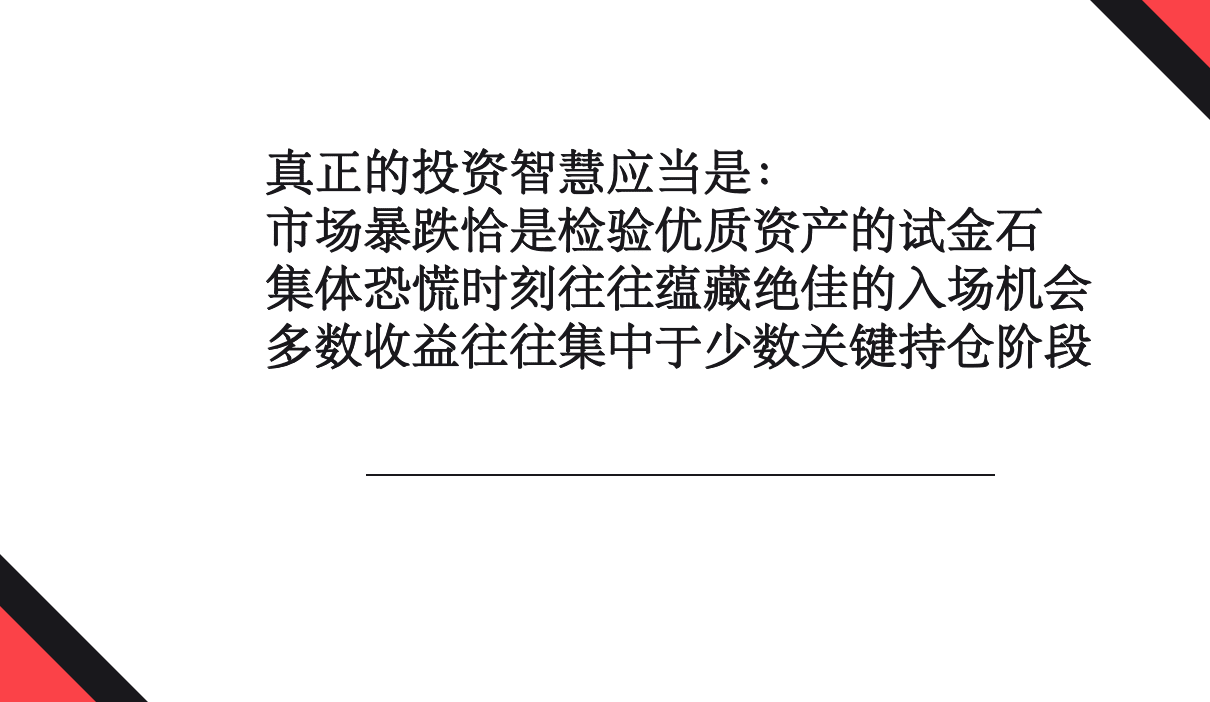
Remember:
In the capital market
Short-term price fluctuations are driven by emotions
Long-term value return is determined by the company's fundamentals

This market always repeats the same secret: 90% of the leeks are watching the news to speculate on cryptocurrencies, 9% of the smart people are watching the movements of the market makers, and 1% of the wolf-like players are using the daily moving average to dissect the market genes.
Step 1: Verify the Moving Average

Think of the daily moving averages as three veteran Chinese medicine practitioners with very different personalities—the 5-day moving average is the director of the emergency department, the 30-day moving average is a master of internal medicine, and the 60-day moving average is simply sitting on a throne in the specialist clinic. When the director of the emergency department suddenly becomes agitated and leaps over the heads of the two veterans to feel their pulses and ask questions (the 5-day moving average crosses the 30/60-day moving averages), this is a signal that the market is ready to rush to the ICU for emergency treatment. Conversely, if the director of the emergency department slips and tumbles off the throne in the specialist clinic (the 5-day moving average crosses the 30/60-day moving averages), don't hesitate, sell your position immediately.
Step 2: Establish a trading system to prevent brain heat

Now, put a sticky note on your trading screen and write in bold marker: Moving averages clash, retreat, everyone. When the 5-day and 30-day moving averages are tangled like a pretzel, rushing in is like rolling the dice and guessing odds or evens. A true hunter only pulls the trigger when all three lines are moving in the same direction.
Here's a counterintuitive fact: In the cryptocurrency world, where sharp rises and falls are commonplace, the simpler the daily moving average strategy, the more deadly it is. Just like a duel between true martial arts masters, there's never a need for fifty opening moves. A breakout of the 5-day moving average signals the drawing of the sword, while a reversal of the 60-day moving average signals the moment to sheathe it.
Step 3: Weld the discipline into the operating table

I've seen too many people write their trading plans on napkins, only to be scared by a sudden market spike in the middle of the night and tear off the napkin to wipe their cold sweat. The cruelest and most merciful thing about the daily moving average strategy is that it forces you to become an emotionless signal execution machine.
Here's a bit of dark humor: A trader who had been consistently profitable for three years using a daily moving average strategy received a 5-day moving average breakout alert at a wedding last year. He hid in the bathroom to close his positions before exchanging rings. Afterward, the bride grabbed his ear and cursed him, but after seeing his account balance, she quietly bought him a top-of-the-line monitor.
(Engrave this sentence on your pituitary gland: You can doubt your own operations, but never doubt the moving average that has formed a combined force)
It took me ten years and countless losses to finally figure out this "brainless rolling method" - 300 times return in 3 months.
Today I'm sharing everything. Those who understand have already started adjusting their strategies...
Rolling warehouse five-step kill
Waiting for the wind: Only take action when mainstream currencies such as ETH experience a rolling market
Precision ambush: open a position only when clear technical signals appear
Seize the opportunity: gradually increase investment after the trend is confirmed
Stop while you're ahead: Reduce your position immediately when you reach your target or see a danger signal.
Get out of here safe and sound: Clear your position decisively before the market reverses
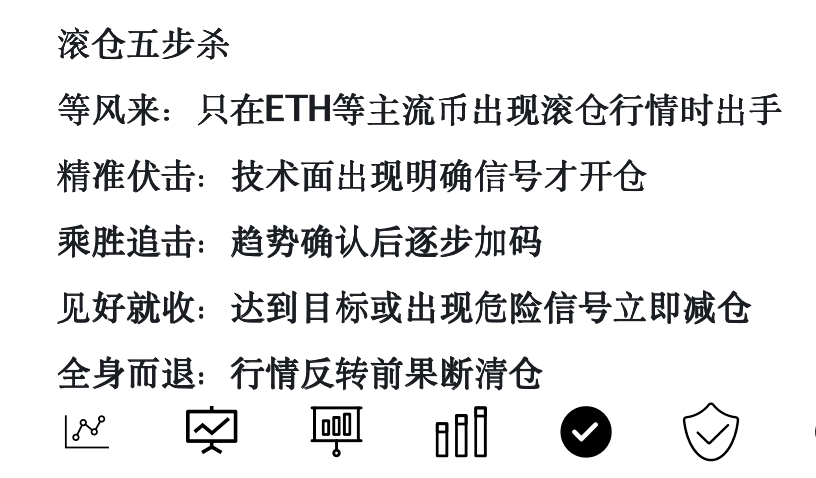
Practical skills
Profit Snowball:
After the first position is profitable, only increase the position at the key breakthrough point
Increase positions during a pullback and reduce positions immediately after a breakthrough
Remember: Not all profits are worth adding to your position
Base warehouse + T0 golden combination:
Half-position flow: 50% fixed holding, 50% for swing trading
Thirty percent bottom: 30% long-term, 70% short-term sniping
70% bottom: 70% core positions, 30% flexible operations
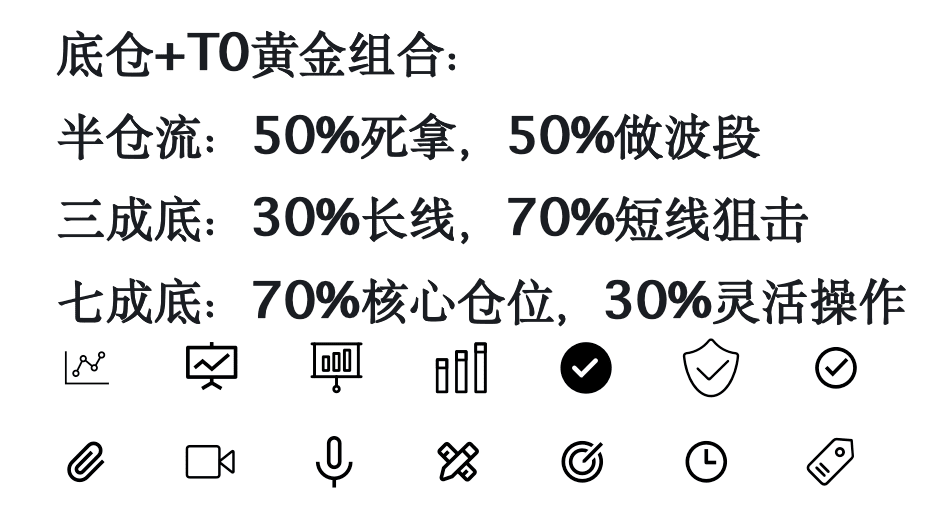
The most ruthless aspect of this strategy is that it allows you to capitalize on major trends while simultaneously reducing costs through swing trading. But remember, rolling positions without discipline is suicidal; the market is a cure-all for any disobedience.
Ten years of experience boils down to one sentence: Let profits run, but don't forget to harvest them regularly. This is the true art of rolling.


